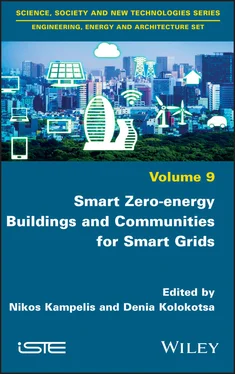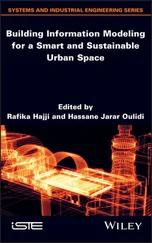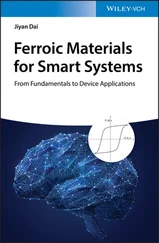The already available DR programs are generally categorized into incentive and price-based programs. Incentive-based programs provide economic incentives for customers to reduce demand at times of capacity shortage or exceptionally high electricity prices, whereas price-based demand response programs involve dynamic tariff rates that promote general changes in patterns of electricity use. Time-of-use tariffs, which are one of the major price-based DR programs in use involve different unit prices within different blocks of time, and reflect the average cost of utilities during these periods (Bartusch and Alvehag 2014).
There are some efforts at the country level that show the benefits of DR in electricity supply. The policy discussions in the UK on the economic case for DR are analyzed by Bradley et al. (2013). A cost/benefit analysis is performed in a quantitative manner showing that the benefits on a country level are clearly very significant, that is, there was a 2.8% reduction in overall electricity use and a 1.3% shift in peak demand. Moreover, the economic viability of the DR mainly depends on ensuring participation by the end users, that is, the building sector. An increase in participation can be ensured by lowering the participant costs and sharing of benefits. Finally, it is revealed that the actual costs of the infrastructure are also affected by customer engagement and trust. An empirical study for Sweden is performed by Bartusch and Alvehag (2014) in order to estimate the end users’ response to a demand-based time-of-use electricity distribution tariff among Swedish single-family residential houses. The study showed that in the long term, the residential households still respond to the price signals of the tariff by cutting demand in peak hours and shifting electricity consumption from peak to off-peak hours.
Energy efficient smart buildings are possible by integrating a smart meter, smart sockets, domestic renewable energy generation and energy storage systems for integrated energy management, and this integrated system supports demand side load management, distributed generation and distributed storage provisions of future smart grids (Kayo et al. 2014; Keles et al . 2015). Consequently, the effective integration of buildings in smart grids requires appropriate levels of digital technology and interoperability (Oliveira-Lima et al . 2014). The successful implement-station of DR, as mentioned in the previous paragraphs, requires near-real-time power management (Hong et al . 2014) as well as advanced building automation and communication protocols. More information on the various communication protocols that can support the ZEB perspective can be found in Kolokotsa et al . (2011). Recent studies interconnect the ASHRAE BACnet protocol with the wireless Sigsbee protocol to provide DR in the buildings’ energy management side. The addendum announced by ASHRAE specifies that the wireless communication for BACnet will be based on the Zigbee protocol (ANSI/SHRAE standard 135-2010 2013). The interconnection of BACnet with Zigbee allows the management of electrical resources and devices’ load, targeting to optimize and reduce the electricity cost and reduce peak power consumption. The real-time characteristics and functionalities of the BACnet–Zigbee interconnection are examined, showing the potential and critical role of recent developments in the implementation of smart grids’ infrastructure in buildings. Other researchers provide interconnection of the BACnet and EnOcean protocols to measure energy metering of various appliances in buildings and to control the load using wireless communications (Li and Hong 2014). Additionally, the DR using the specific connectivity is shown using experimental facilities that can respond to real-time changes in the electricity price.
1.1.3. Distributed systems
Distributed systems play a crucial part in the demand response of smart buildings, as they provide the necessary technical infrastructure (Chalkiadakis et al . 2011). Moreover, distributed systems support the effective exploitation of energy storage. Since smart grids may integrate renewable energy sources, energy storage is often seen as necessary for the electric utility systems with large amounts of solar or wind power generation to compensate for the inability to schedule these facilities to match power demand.
Load shifting through effective thermal energy storage or electricity storage is a major part of smart grids and already exploited by various studies for generation– consumption matching and zero energy targeting (Chalkiadakis et al. 2011; ANSI/SHRAE standard 135-2010 2013). Therefore, as the major power consumers on the demand side, buildings can actually perform as distributed thermal storages to help relieve the power imbalance of a grid. This requires an accurate prediction of possible power demand variations of buildings and energy information from the grid side for interaction and optimization (Xue et al . 2014) based on measurements acquired from smart metering. Finally, smart grids can play a significant role in the building sector due to the fact that they create a physical proximity between consumers and energy production that may help increase end users’ awareness towards a more rational use of energy for buildings. Studies show that the users’ awareness combined with smart grids can decrease the energy costs by 15% (Li and Hong 2014).
1.2. Smart and zero-energy communities
Moving from the building to the community level, the requests of the future communities are very demanding. They should be places of advanced social progress and environmental regeneration, as well as places of attraction and engines of economic growth based on a holistic integrated approach in which all aspects of sustainability are taken into account.
As mentioned in the Leipzig Charter ( http://ec.europa.eu/regionalpolicy/archive/themes/urban/leipzigcharter.pdf), sustainable communities and cities should:
– Create a suitable environment for urban populations that can attract industry, businesses, tourism and workforces.
– Modernize the infrastructure networks. This approach is about achieving a high-quality and affordable urban transport system that includes a network linking the city to the region, as well as providing and improving supply networks such as energy, waste-water treatment and water supply.
– Ensure the efficient use of natural resources, economic efficiency and the energy efficiency in new and existing buildings.
The National Renewable Energy Laboratory defined the zero-energy community as “one that has greatly reduced energy needs through efficiency gain such that the balance of energy for vehicles, thermal, and electrical energy within the community is met by renewable energy” (Carlisle et al . 2009) and “community scenarios could link transportation, home and the electric grid as well as enable large quantities of renewable power onto the grid”.
Therefore, a smart zero-energy community ( http://www.smartcommunities.org) is a region where its citizens and local authorities are exploiting the information technology to “transform life and work in significant and fundamental rather than incremental ways” to meet the aforementioned strategies and objectives. As mentioned on the Smart Communities website: “The goal of such an effort is more than the mere deployment of technology. Rather it is about preparing one’s community to meet the challenges of a global, knowledge economy.”
Smart grids can be the basis of smart zero-energy communities offering:
1) Reliability and security as the prominence of information technology.
2) Optimal operation, thus contributing to a generation–consumption matching (Kolokotsa et al. 2011) through the full exploitation of low zero carbon (LZC) emission technologies (Carlisle et al. 2009; Xue et al. 2014).
Читать дальше












